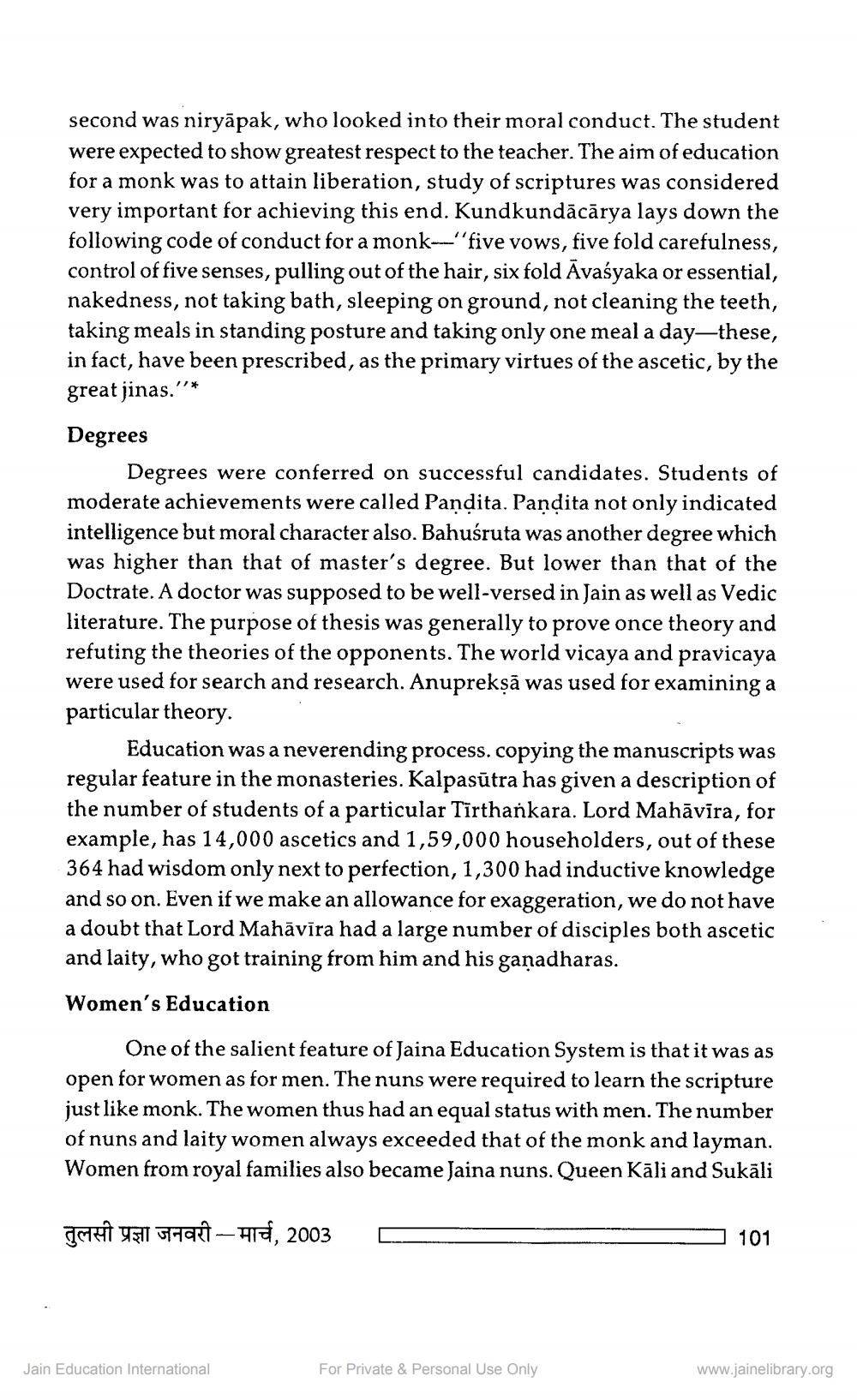________________
second was niryāpak, who looked into their moral conduct. The student were expected to show greatest respect to the teacher. The aim of education for a monk was to attain liberation, study of scriptures was considered very important for achieving this end. Kundkundācārya lays down the following code of conduct for a monk-'five vows, five fold carefulness, control of five senses, pulling out of the hair, six fold Avaśyaka or essential, nakedness, not taking bath, sleeping on ground, not cleaning the teeth, taking meals in standing posture and taking only one meal a day—these, in fact, have been prescribed, as the primary virtues of the ascetic, by the great jinas."* Degrees
Degrees were conferred on successful candidates. Students of moderate achievements were called Pandita. Pandita not only indicated intelligence but moral character also. Bahuśruta was another degree which was higher than that of master's degree. But lower than that of the Doctrate. A doctor was supposed to be well-versed in Jain as well as Vedic literature. The purpose of thesis was generally to prove once theory and refuting the theories of the opponents. The world vicaya and pravicaya were used for search and research. Anupreksā was used for examining a particular theory.
Education was a neverending process. copying the manuscripts was regular feature in the monasteries. Kalpasūtra has given a description of the number of students of a particular Tīrthankara. Lord Mahāvīra, for example, has 14,000 ascetics and 1,59,000 householders, out of these 364 had wisdom only next to perfection, 1,300 had inductive knowledge and so on. Even if we make an allowance for exaggeration, we do not have a doubt that Lord Mahāvīra had a large number of disciples both ascetic and laity, who got training from him and his ganadharas.
Women's Education
One of the salient feature of Jaina Education System is that it was as open for women as for men. The nuns were required to learn the scripture just like monk. The women thus had an equal status with men. The number of nuns and laity women always exceeded that of the monk and layman. Women from royal families also became Jaina nuns. Queen Kāli and Sukāli
Jaut 1 Hall - H1E, 2003
A
101
Jain Education International
For Private & Personal Use Only
www.jainelibrary.org




